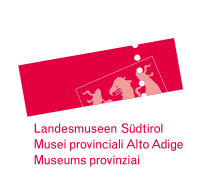Upper Chapel
The Upper Chapel. Around 1285 ruling prince Meinhard II had a second storey built over the existing single storey chapel, thereby creating an elevated area reserved for the rulers. It was consecrated on the feast of Elisabeth of Thuringia (1207-1231) (also known as Elizabeth of Hungary), patron saint of charity, and a distant relative of the Counts of Tyrol.
Gothic fresco secco paintings adorn the walls of the Upper and Lower Chapels. They were completed around 1330 at the time of Ex-King Henry, the father of Margarete. They depict themes which for the most part can be associated with the Virgin Mary, along with representations of saints. You will also find here the oldest surviving representation in colour of the Tyrolean coat of arms, as well as the coat of arms of the Duchy of Carinthia; Heinrich was de facto also Duke of Carinthia.
The altar of Castle Tyrol (around 1370). The oldest surviving winged altarpiece in the Alpine area was donated by brothers Leopold III and Albert III around 1370 and produced in Vienna. The two members of the Habsburg dynasty are portrayed kneeling with their wives in the classic donor pose on the outer wings. The original has been kept in the Ferdinandeum, the Tyrolean State Museum in Innsbruck, since 1938, but this faithful copy stands in its original place on the altar and was completed in 2001 by the Unika Group in Ortisei, Val Gardena. With the wings open, six scenes from the life of the Virgin Mary are revealed, including the Annunciation, the Birth of Christ, the Adoration of the Magi and the Death of the Virgin.


